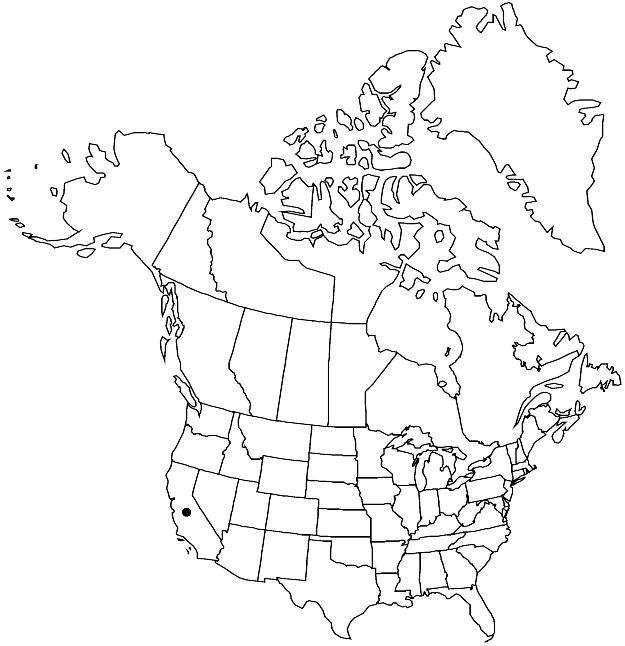Orthotrichum anodon
Bryologist 109: 188, figs. 1 – 17. 2006.
Plants to 0.5 cm. Stem leaves erect and slightly flexuose when dry, broadly ligulate to ovate-ligulate, 2–2.5 mm; margins recurved to near apex, entire; apex narrowly obtuse; basal laminal cells short-rectangular, walls thin, not nodose; distal cells 10–16 µm, 1-stratose, smooth or papillae 1 or 2 per cell, conic, low. Specialized asexual reproduction absent. Sexual condition gonioautoicous. Seta 0.5 mm. Capsule immersed to short-emergent, short-cylindric to elliptic when dry, 1.4–1.6 mm, smooth, constricted at mouth by 8 short ribs when dry; stomata immersed; peristome single; prostome absent; exostome absent; endostome segments 16, occasionally rudimentary, of 3 or 4 rows of cells, finely papillose. Calyptra conic, smooth, hairy, hairs smooth. Spores 17–21 µm.
Habitat: Quercus trunks
Elevation: low elevations
Discussion
Orthotrichum anodon is known from only one locality in Los Angeles County. The species is distinguished by its small plants, ligulate, blunt leaves, immersed stomata, lack of exostome, and capsule characters, which are unique among North American species of Orthotrichum. The puckered capsule mouth is reminiscent of that of several species of Ulota including U. coarctata and U. obtusiuscula. Stomata are found in the neck and proximal third of the urn and covered by subsidiary cells; the endostome segments are fragile and hyaline.
Selected References
None.
